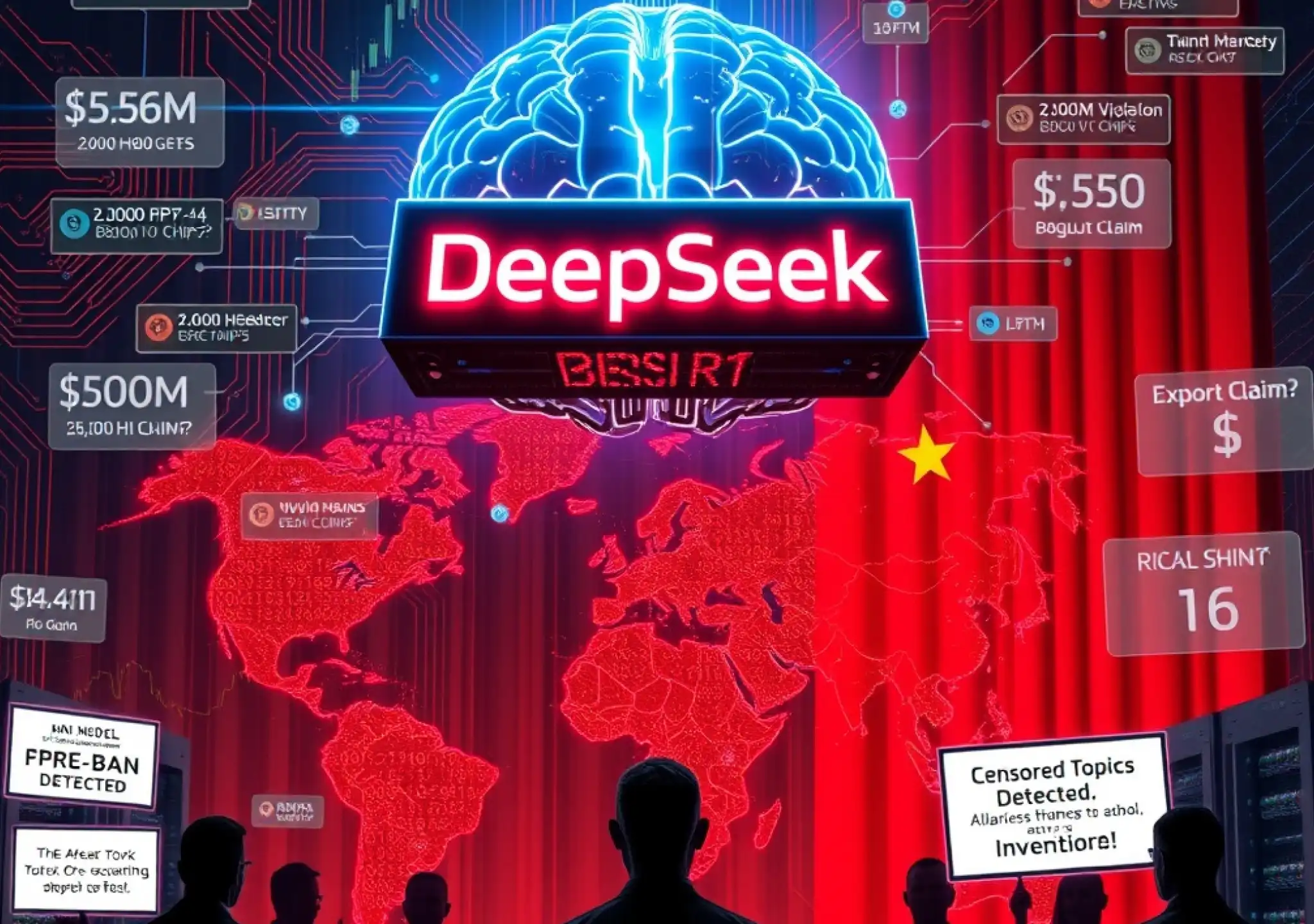Tech Leaders Question DeepSeek’s Budget and Chip Use
Chinese AI startup DeepSeek has caused a stir in the global tech scene with its AI model R1, claiming performance on par with leading offerings from Google and OpenAI. The Hangzhou-based firm’s assertion that it developed R1 with just $5.6 million and less powerful chips than those used by American firms has drawn widespread attention — and skepticism.
DeepSeek’s announcement challenges long-standing beliefs about U.S. leadership in artificial intelligence and the multi-billion-dollar costs typically associated with developing cutting-edge models. However, experts and tech leaders are now raising concerns about the accuracy of these claims.
Pedro Domingos, a professor emeritus at the University of Washington, expressed caution, suggesting that while training a model for $6 million may be possible, the cost might only account for fine-tuning an existing, more expensive model. There’s speculation that DeepSeek’s achievements may have relied heavily on earlier, costlier developments.
Hardware, Cost, and Secrecy Raise Doubts
DeepSeek’s team reported using 2,000 Nvidia H800 GPUs — less advanced hardware designed to comply with U.S. export restrictions — to train the V3 base model of R1. This figure stands in stark contrast to OpenAI’s GPT-4, which is estimated to have used as many as 25,000 more powerful H100 chips and a budget exceeding $100 million.
Founded in late 2023 by entrepreneur Liang Wenfeng, DeepSeek appears to have disrupted perceptions about the need for massive investments in data centers and high-end chips. Their claims also cast doubt on the effectiveness of U.S. policies aimed at restricting China’s access to critical AI hardware.
The announcement impacted markets dramatically, with Nvidia’s stock plunging 17 percent and erasing nearly $593 billion in value — comparable to Sweden’s GDP. However, doubts have continued to grow.
Critics Say Claims Could Be Misleading
Notable tech figures have openly challenged DeepSeek’s narrative. Palmer Luckey, Oculus VR’s founder, dismissed the $5.6 million figure as “bogus” and suggested the claims might be part of a coordinated campaign to reduce confidence in American AI companies. He accused Chinese interests of manipulating the narrative for financial gain and political influence.
Alexandr Wang, CEO of Scale AI, echoed these concerns, suggesting DeepSeek may have secretly accessed 50,000 H100 chips — a violation of export restrictions. Though Wang did not provide concrete evidence, his assertion was backed by Elon Musk, who commented with a simple “Obviously” in support.
While DeepSeek has not commented publicly on the controversy, Zihan Wang, a PhD candidate previously involved with the company, defended their work. Wang dismissed critics as idle talkers and encouraged them to replicate the model instead of speculating.
In an earlier interview, DeepSeek’s founder Liang said his firm had acquired 10,000 Nvidia A100 chips before U.S. export bans took effect. Although these are older than the H800, their use raises questions about how deeply DeepSeek relied on pre-ban resources.
Content Controls and Market Reactions
Users of R1 have pointed out that the model adheres to Chinese content regulations, censoring topics like the Tiananmen Square massacre and Taiwan’s political status. This suggests that despite technical breakthroughs, the tool may face limitations in terms of open information access.
As initial panic among investors faded, Nvidia’s stock rebounded by nearly 9 percent, and the broader Nasdaq 100 rose 1.59 percent after the previous day’s losses.
Tim Miller, an AI expert from the University of Queensland, said while there are no obvious red flags in DeepSeek’s work, the financial details remain ambiguous. He noted that genuine breakthroughs in computer science are rare but possible, and DeepSeek’s research will soon be tested as others attempt to replicate its results.
Falling AI Costs and a Wave of New Models
Lucas Hansen, co-founder of the nonprofit CivAI, explained that DeepSeek’s reported costs refer to training the V3 base model, comparable to GPT-4, not the final R1 model. Since 2022, improvements in algorithms and hardware have significantly reduced the cost of training such models, making DeepSeek’s budget more plausible.
Hansen noted that DeepSeek’s innovation lies in how it enhanced the base model to reason more effectively — a relatively inexpensive process. Now that DeepSeek has released its methodology, it may spark a flood of similar “thinking” AI models from other developers.
In the wake of DeepSeek’s bold move, the AI landscape could be poised for a new era of affordability and innovation — though transparency and trust remain critical issues.

